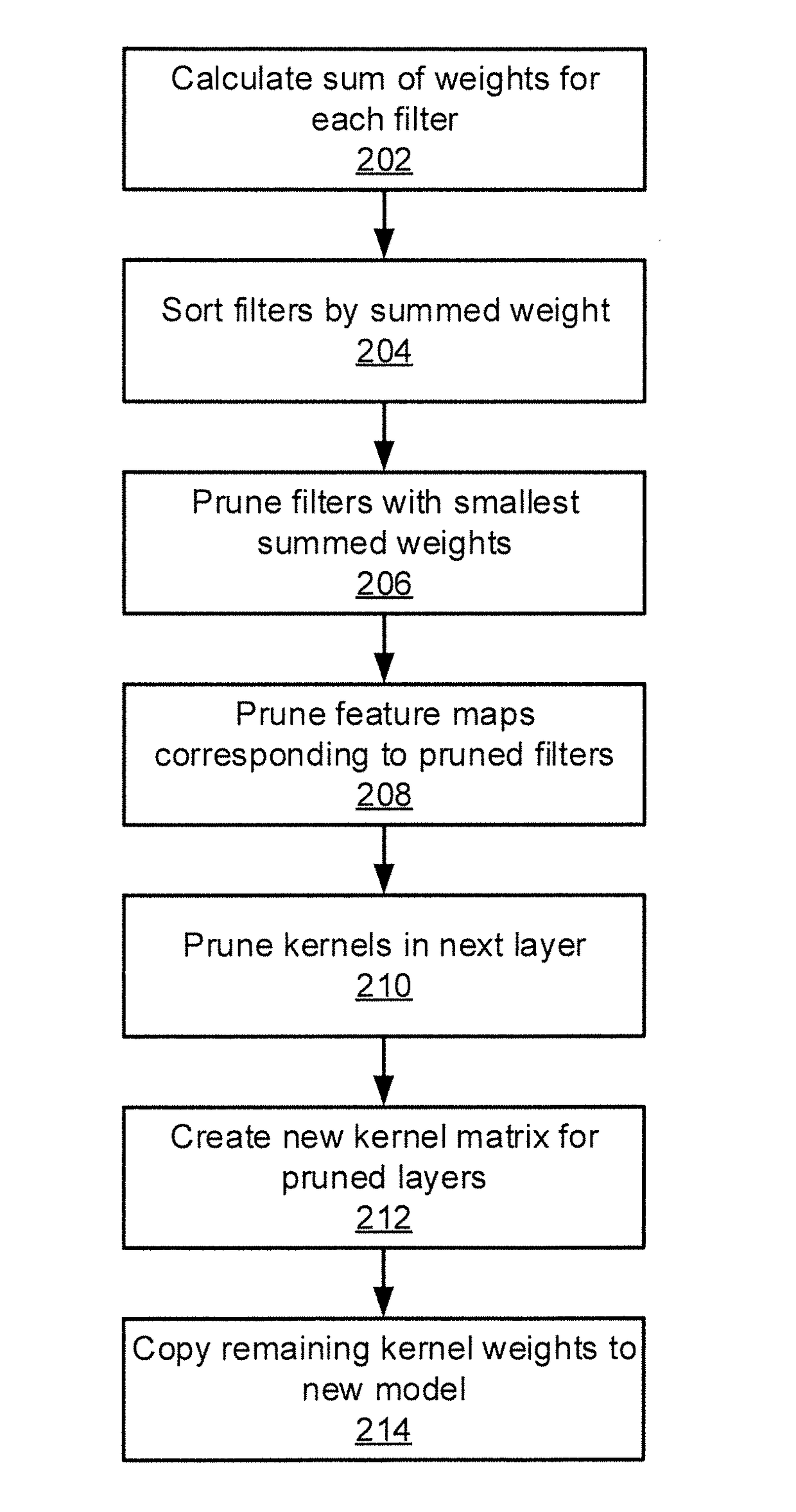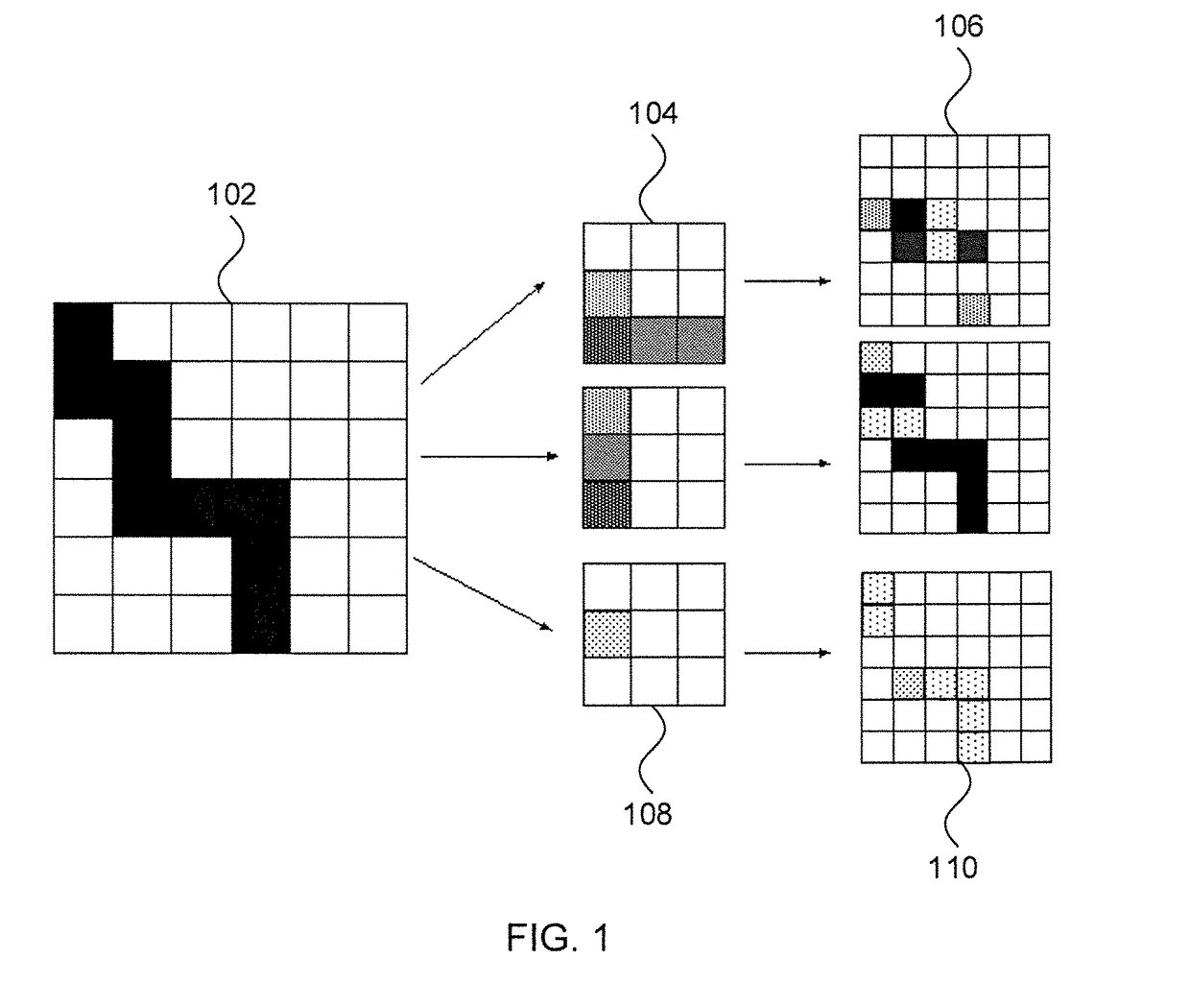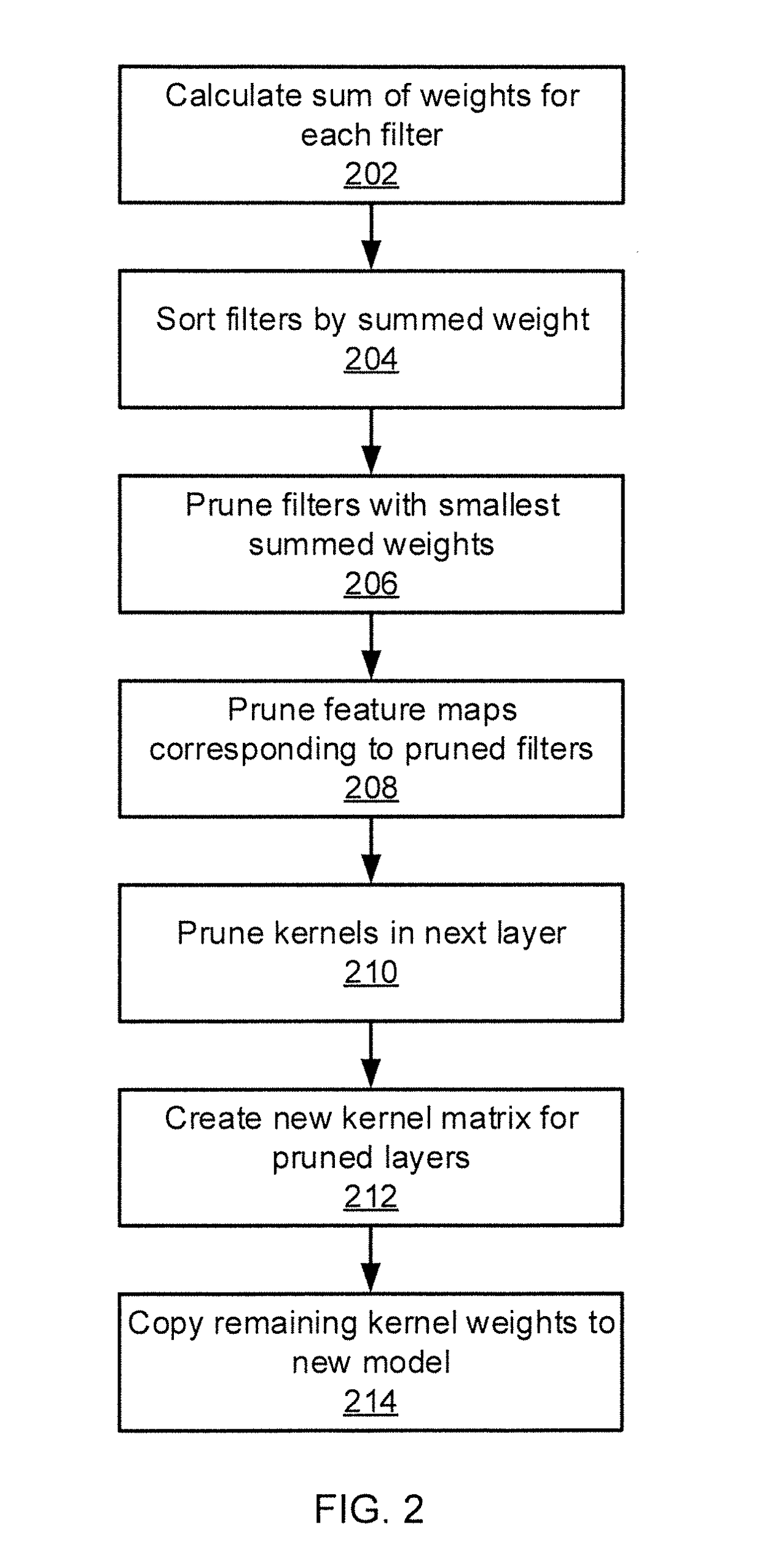Passive pruning of filters in a convolutional neural network
- Summary
- Abstract
- Description
- Claims
- Application Information
AI Technical Summary
Benefits of technology
Problems solved by technology
Method used
Image
Examples
Embodiment Construction
[0014]In accordance with the present principles, systems and methods are provided for passive pruning of filters in convolutional neural networks (CNNs). Rather than pruning parameters, the present embodiments reduce the computational cost of trained CNNs by pruning filters. Pruning filters does not introduce sparsity and therefore does not necessitate the use of sparse libraries or specialized hardware. The number of filters that are pruned correlates directly with computational acceleration by reducing the number of matrix multiplications. In addition, instead of layer-wise iterative fine-tuning, one-shot pruning and retaining may be used to save retraining time when pruning filters across multiple layers.
[0015]CNNs are extensively used in image and video recognition, natural language processing, and other machine learning processes. CNNs use multi-dimensional layers of weights to create filters that have small spatial coverage but that extend through the full depth of an input vo...
PUM
 Login to View More
Login to View More Abstract
Description
Claims
Application Information
 Login to View More
Login to View More - Generate Ideas
- Intellectual Property
- Life Sciences
- Materials
- Tech Scout
- Unparalleled Data Quality
- Higher Quality Content
- 60% Fewer Hallucinations
Browse by: Latest US Patents, China's latest patents, Technical Efficacy Thesaurus, Application Domain, Technology Topic, Popular Technical Reports.
© 2025 PatSnap. All rights reserved.Legal|Privacy policy|Modern Slavery Act Transparency Statement|Sitemap|About US| Contact US: help@patsnap.com



